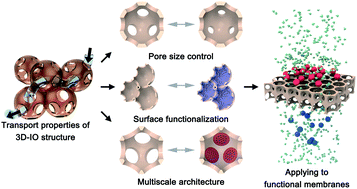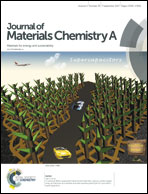Multiscale-architectured functional membranes utilizing inverse opal structures
Abstract
Membranes have been used throughout history to purify water. Advances made in membrane technologies over the past century have typically focused on either enhancing the separation efficiency of a membrane or improving the permeation flux. Enhancing the separation efficiency, however, inevitably leads to a reduction in the permeation flux, while improving the permeation flux results in lower separation efficiencies. Recently, isoporous membranes have garnered great attention because of their unique characteristics in terms of their pore uniformity, resulting in highly selective separation capabilities for desired species. There have been attempts to employ highly porous three-dimensional inverse opal (3D-IO) structures as a means to develop high-performance isoporous membranes. 3D-IO membranes are basically prepared by assembling closely packed colloidal particles, filling the gaps with a suitable material, and then dissolving out the colloids to form an inverse opal structure. In particular, 3D-IO structures can be implemented to impart advanced membrane properties through secondary processes of multiscale-architecturing, such as elaborate control over the interconnected pore size, embedding specific functional moieties, and incorporating structural hierarchy; this eventually creates high-performance membrane properties that attain both high separation efficiencies and high permeabilities. In this review, we begin with recent developments in nanostructuring that have been used to generate 3D opal and IO structures, including their design and fabrication methods, with a particular emphasis on the preparation of large-scale 3D-IO structures for membrane applications. We then discuss the different methods that can be used to harness 3D-IOs, combined with multiscale architecturing, to obtain improved performances in separation membranes and catalytic membranes. We anticipate that approaches that utilize 3D-IOs will have great potential to provide a novel platform for next-generation, high-performance membranes.

- This article is part of the themed collections: Recent Review Articles and 2017 Journal of Materials Chemistry A HOT Papers


 Please wait while we load your content...
Please wait while we load your content...